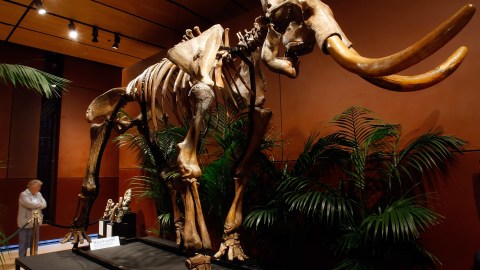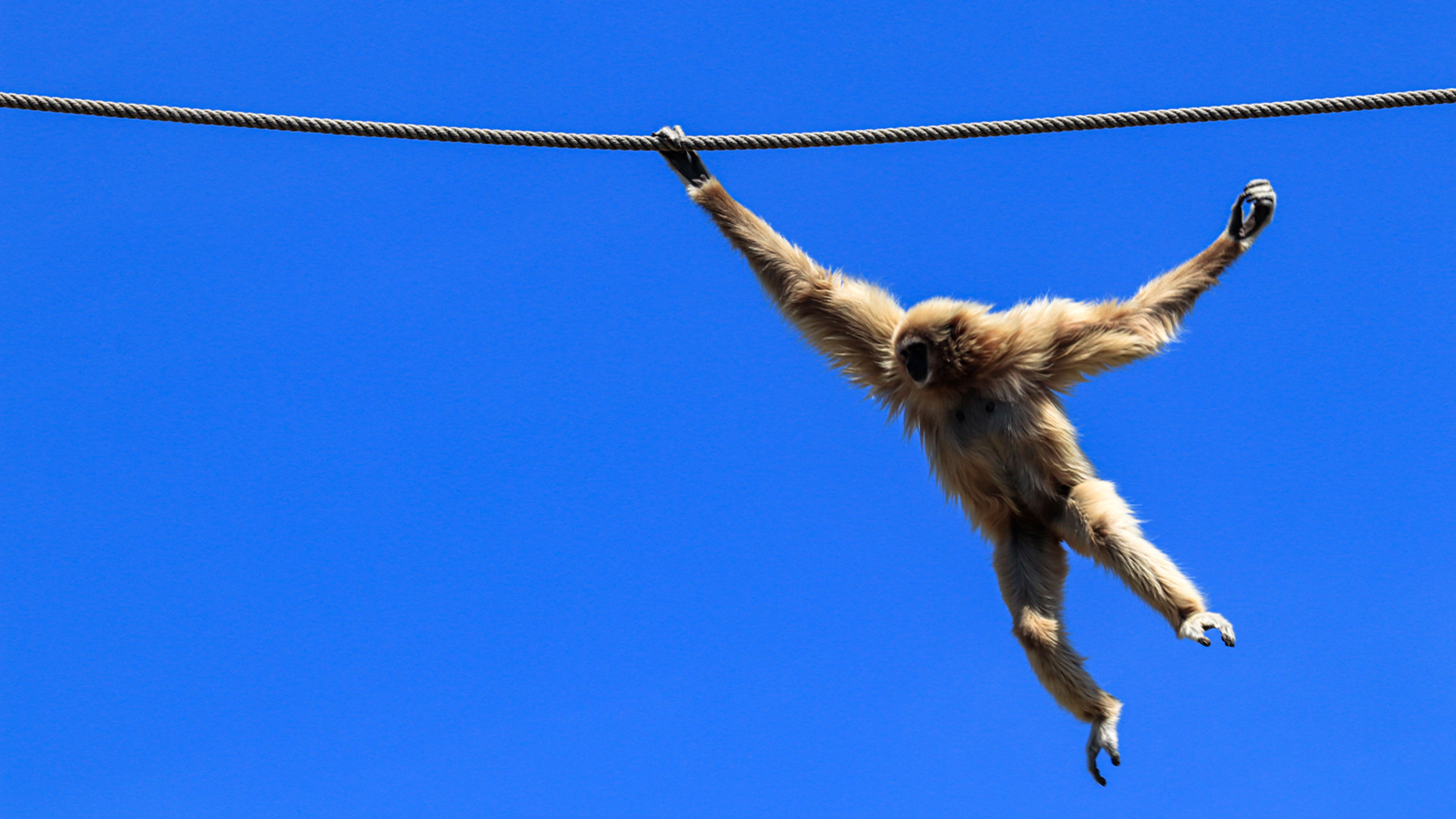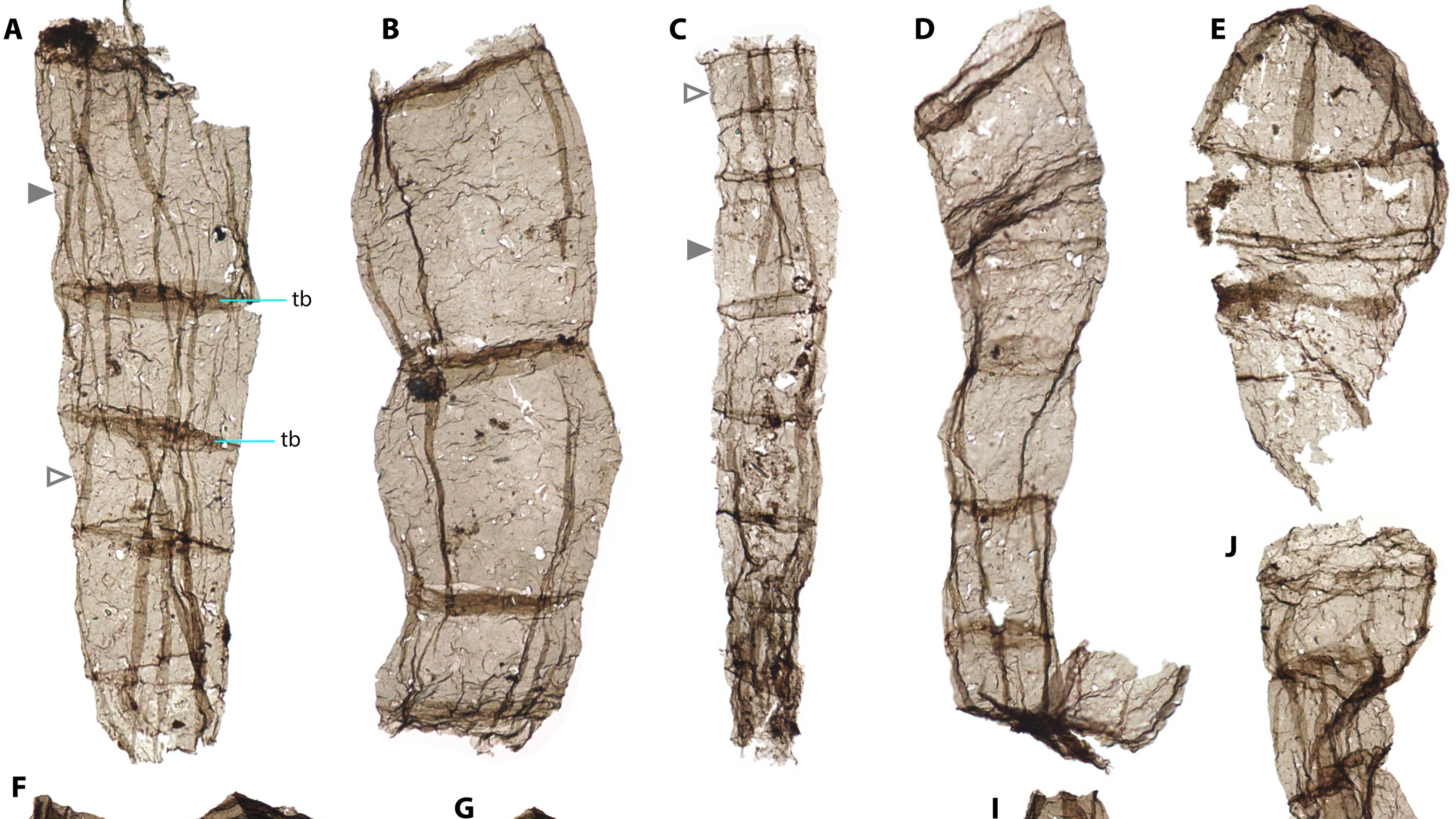How DNA revealed the woolly mammoth’s fate – and what it teaches us today

Ethan Miller/Getty Images
Every summer, children on the Alaskan island of St Paul cool down in Lake Hill, a crater lake in an extinct volcano – unaware of the mysteries that lie beneath.
It was here, on a winter expedition, that scientists uncovered the secrets of what drove some of the world’s last remaining woolly mammoths to extinction, and when it happened.
Dr Beth Shapiro is a paleo-geneticist, who co-runs the Paleogenomics Lab the University of California, Santa Cruz.
Using modern genomics techniques, her team looks back at the past to understand how species and populations have evolved through time, based on their DNA. It then applies those lessons to the conservation of endangered species today.
The genetic material from animals that lived in the northern hemisphere during the Ice Age, including bison, wolves, mammoths and horses, is particularly well preserved.
Dr Shapiro is able to extract DNA from samples, such as teeth, to see how species differed genetically and learn when populations were growing, when they were shrinking, when individual animals might have been moving long distances – and when they could not.
“Connectivity is a crucial part of many of these species’ extinction stories,” says Dr Shapiro.
And this is true of the fate of St Paul Island’s woolly mammoths.
When did mammoths roam the Earth?
Mammoths lived on North America’s mainland until about 10,000 years ago, but they survived in two places for much longer: St Paul Island and Wrangel Island, in the Russian Arctic, where teeth have been found that are only 4,000 years old.
St Paul is a volcanic island that until around 9,000 years ago was connected to the mainland by the Bering Land Bridge, which enabled animals to roam freely to and fro.
But as the climate warmed and sea levels rose, it became isolated – and the mammoths were trapped. They were the only large mammal on the island, with no predators and, speaking at a BetaZone session at Davos, Dr Shapiro said it would have been a “mammoth utopia”.
How did a lake reveal what happened?
Dr Shapiro explains: “Lakes are brilliant sources of ancient DNA, because they are a sink for genetic material during the summer. Lake Hill is the only source of fresh water on St Paul. So all the animals wander in to drink and the DNA they deposit sinks to the bottom and then freezes.
“Over time, you get accumulation like a stratigraphy of layer upon layer of everyone that was present on the island from the past to the present day. We knew if we could get a copy of this, we could figure out who was there, when and with whom.”
On their winter expedition to Lake Hill, Dr Shapiro’s team drilled down through the ice of the lake to the gravel at the bottom and extracted a core.
The genetic material, they later learned, dated back to 17,000 years ago.
“We took tiny little plugs of DNA all the way to the top, to the present day, and looked for mammoth DNA. We also looked at the vegetation and components of the lake itself to see if it was changing over time. Microscopic algae and microscopic animals, for example, can tell us whether the lake was salty or not and how shallow it was.”
Why did the St Paul Island mammoths die?
All of that data fit together like a jigsaw puzzle to show Dr Shapiro what had happened.
Mammoth DNA was present all the way from the bottom until around 5,600 years ago. Nothing changed with the vegetation, says Dr Shapiro, so they didn’t run out of food.
“But everything else about the lake changed: the water chemistry changed; the rate of sediment accumulation changed. And that community of microorganisms completely turned from one that thrives in clear, deep fresh water to a community that prefers to live in very shallow, cloudy and slightly salty water.”
All of which meant there had been a severe weather event, a drought, on St Paul Island. The lake started to dry up and the mammoths were left with nothing to drink.
“Had it happened 13,000 years ago, mammoths would have had another option. They could have wandered onto the mainland and looked for another source of fresh water. But they couldn’t because they were on an island completely isolated, cut off from the mainland. Stuck. And so they became extinct.”
How can we protect isolated habitats today?
Dr Shapiro warns the isolation that killed the mammoths on St Paul is threatening other species and biodiversity today.
“Islandization takes different forms where the habitats that we’ve chosen to protect are surrounded not by water, but by other things like farms and agriculture. By roads and highways and freeways. And by cities of all sizes.
“This places the plants and animals that live in these island habitats in a precarious situation. An extreme weather event or the introduction of a predator or disease can upset the balance of interactions taking place within these habitats, potentially leading to extinction.”
Studies of other ancient animals using the same method, from woolly rhinos to Arctic horses and species of lion, have also shown connectivity is a key factor in extinction.
“The populations that remained became increasingly isolated from each other, both geographically and genetically, with each of these island populations functioning as their own tiny, isolated thing.”
Any plan to protect and preserve endangered species must also give animals routes of escape to move between habitats or find new ones as the climate warms.
“This could mean building overpasses where animals can cross highways. We could create greenways, green roofs, city parks, green corridors along rivers and roads, and not just build walls or barriers that further fragment this already fragmented landscape.”
The Yellowstone to Yukon Conservation Initiative is an example of an organization doing just that – aiming to link Yellowstone National Park in the Western United States with the Yukon in Canada, where Dr Shapiro does most of her work.
“A sustainable future for biodiversity will require creativity,” she says. “But it will also require collaboration.”
Reprinted with permission of the World Economic Forum. Read the original article.





